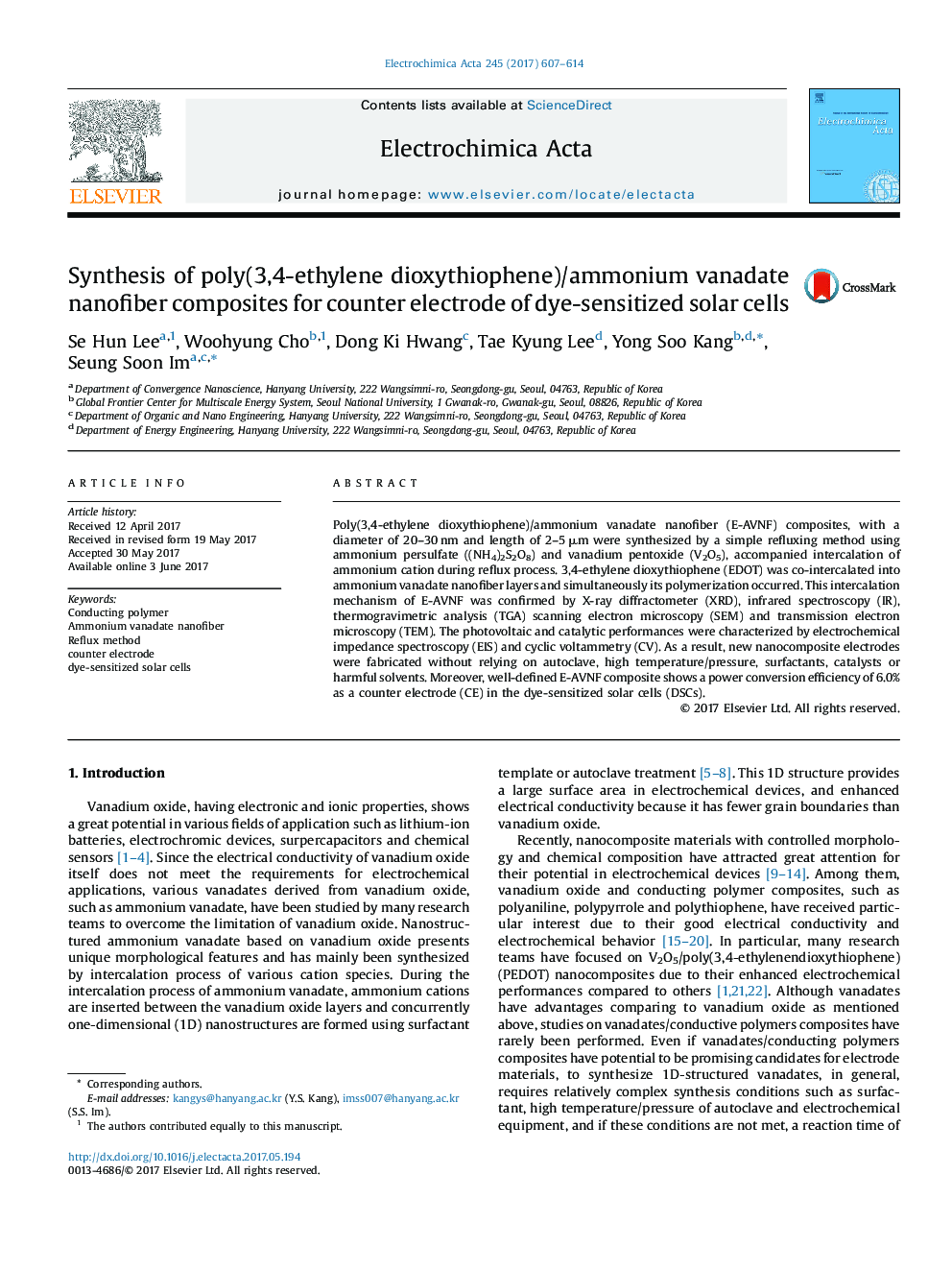| Article ID | Journal | Published Year | Pages | File Type |
|---|---|---|---|---|
| 6470820 | Electrochimica Acta | 2017 | 8 Pages |
â¢The E-AVNF composite is synthesized by simple reflux method.â¢The E-AVNF yielded comparable electrical conductivity 1.9 Ã 10â2 S/cm.â¢The electrical conductivity is improved by the intercalated PEDOT and NH4+.â¢The presence of SO42â is an important factor in forming the nanofiber.â¢The E-AVNF shows a power conversion efficiency of 6.0% as CE in DSCs.
Poly(3,4-ethylene dioxythiophene)/ammonium vanadate nanofiber (E-AVNF) composites, with a diameter of 20-30 nm and length of 2-5 μm were synthesized by a simple refluxing method using ammonium persulfate ((NH4)2S2O8) and vanadium pentoxide (V2O5), accompanied intercalation of ammonium cation during reflux process. 3,4-ethylene dioxythiophene (EDOT) was co-intercalated into ammonium vanadate nanofiber layers and simultaneously its polymerization occurred. This intercalation mechanism of E-AVNF was confirmed by X-ray diffractometer (XRD), infrared spectroscopy (IR), thermogravimetric analysis (TGA) scanning electron microscopy (SEM) and transmission electron microscopy (TEM). The photovoltaic and catalytic performances were characterized by electrochemical impedance spectroscopy (EIS) and cyclic voltammetry (CV). As a result, new nanocomposite electrodes were fabricated without relying on autoclave, high temperature/pressure, surfactants, catalysts or harmful solvents. Moreover, well-defined E-AVNF composite shows a power conversion efficiency of 6.0% as a counter electrode (CE) in the dye-sensitized solar cells (DSCs).
Graphical abstractDownload high-res image (202KB)Download full-size image
